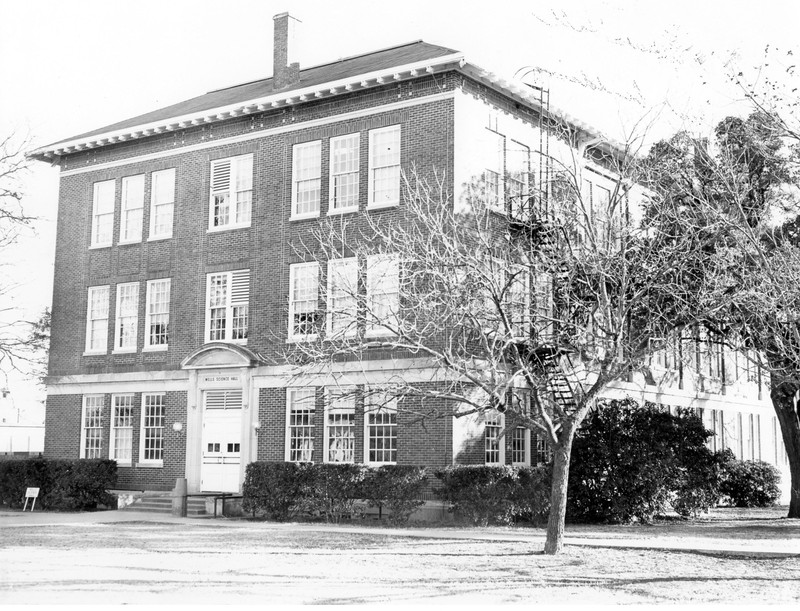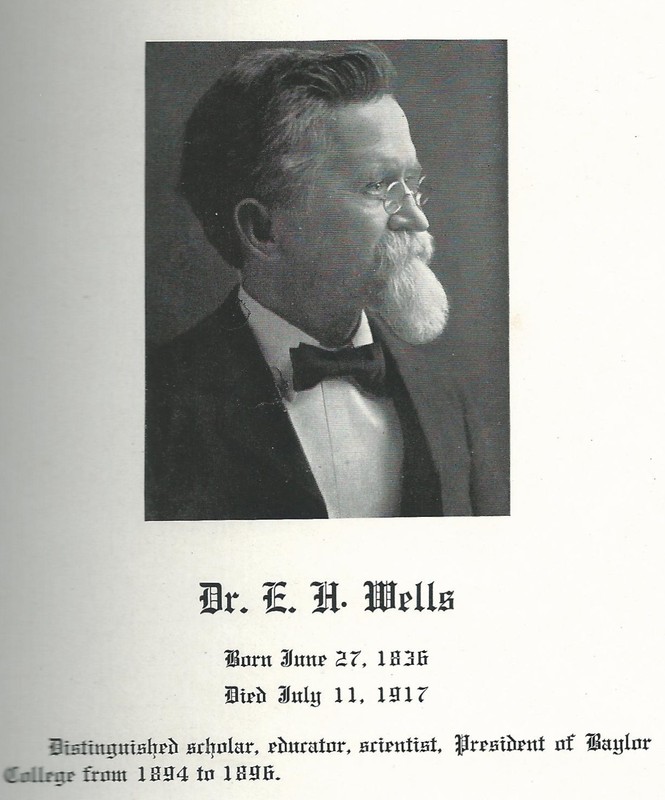UMHB Wells Science Hall
Introduction
Text-to-speech Audio
Wells Science Hall was built in 1920, south of Luther Hall. The three-story fire-proof structure was one of several buildings constructed that year, including Burt and Stribling dorms. It was named for E. H. Wells, president of Baylor Female College from 1894-1896.
Images
Wells Science Hall, 1920

Dr. E. H. Wells

Backstory and Context
Text-to-speech Audio
Eliab Horatio Wells was also a faculty member in the department of Higher Mathematics and Natural Sciences from 1890 to 1896. He served as Professor of Math and Science from 1897 to 1912. He received a Bachelor of Arts degree from University of Georgia in 1855 and a medical degree from what is now Tulane University in 1868. Prior to receiving his medical degree, he served in the Confederate Army. After the war, he taught one year in Tyler and in Rusk, coming to Baylor Female College in 1890. He and his wife are buried in North Belton Cemetery.
Wells Science Hall housed the science and home economic departments along with classrooms and laboratories. In the early days, the home economics program offered professional training courses in county demonstration, costume design, millinery, catering, dietitian work, tearoom management, and work as a hostess.
Wells Science Hall was renovated in 1970 and the York Science Center was added in 1994. It was named after former professor, C. L. York. The home economics department was phased out, and Wells became home to the nursing program in addition to the sciences.
Like other buildings on campus, Wells was damaged by fire. Around midnight on Friday, March 23, 2001, a fire was reported to the Belton Fire Department. Two fire engines and an ambulance were sent to the scene with support from Temple and Stillhouse VFD. About 250 gallons of water were used to bring the fire under control in 20 minutes. Most of the fire damage was confined to the hallway and northwest corner of the first floor with smoke damage on the other floors.
The cause of the fire was believed to be arson with the culprit forcibly entering the building through a basement door. Representatives from the Texas Fire Marshal’s office and the Bureau of Alcohol, Tobacco, and Firearms’ office arrived on the scene early the next morning to collect evidence and fingerprints. Broken glass and matches were found. The only suspect in the case gave a statement. By April, the investigation was completed with plans to present to the federal grand jury in May.
After an eight-month-long investigation, Emily Pelletier, 37, of Waco, was arrested in November 2001 on charges of arson and making a false statement in connection with the fire. She told investigators that two Black males and a Black female forced her to enter the building at gunpoint. Once the fire started, they left her there. The woman, a former nursing student at the university, was arrested on a warrant issued by the United States Marshal’s Office after the grand jury found there was sufficient evidence to indict Ms. Pelletier. Pelletier was sentenced to three years and one month in federal prison. The fire caused more than $1 million in damage and disrupted classes for about 40% of the student body.
Sources
“Faculty.” Catalogue and General Announcement. Baylor College, Belton, Texas. Officers and Teachers and Roster of Students, 1909-1910. Belton: Embree Printing Company.
Findagrave.com
“Former UMHB Student Sentenced to More Than Three Years in Prison for Fire.” The Beaumont Enterprise, May 1, 2003.
“Ground to Be Broken for New Dormitory at Baylor.” Belton Journal, March 18, 1920.
“In Golden Tongue of Romance Tells Beauty Story of Baylor.” Belton Journal, Sep. 15, 1921.
“UMHB Fire Damages Science Hall; ATF, State Fire Marshal Investigating Cause.” Temple Daily Telegram, March 24, 2001.
“UMHB Fire Investigation Nearing Completion.” Belton Journal, Apr 19, 2001.
“UMHB Ready for Grand Jury.” Belton Journal, May 24, 2001.
Findagrave.com
